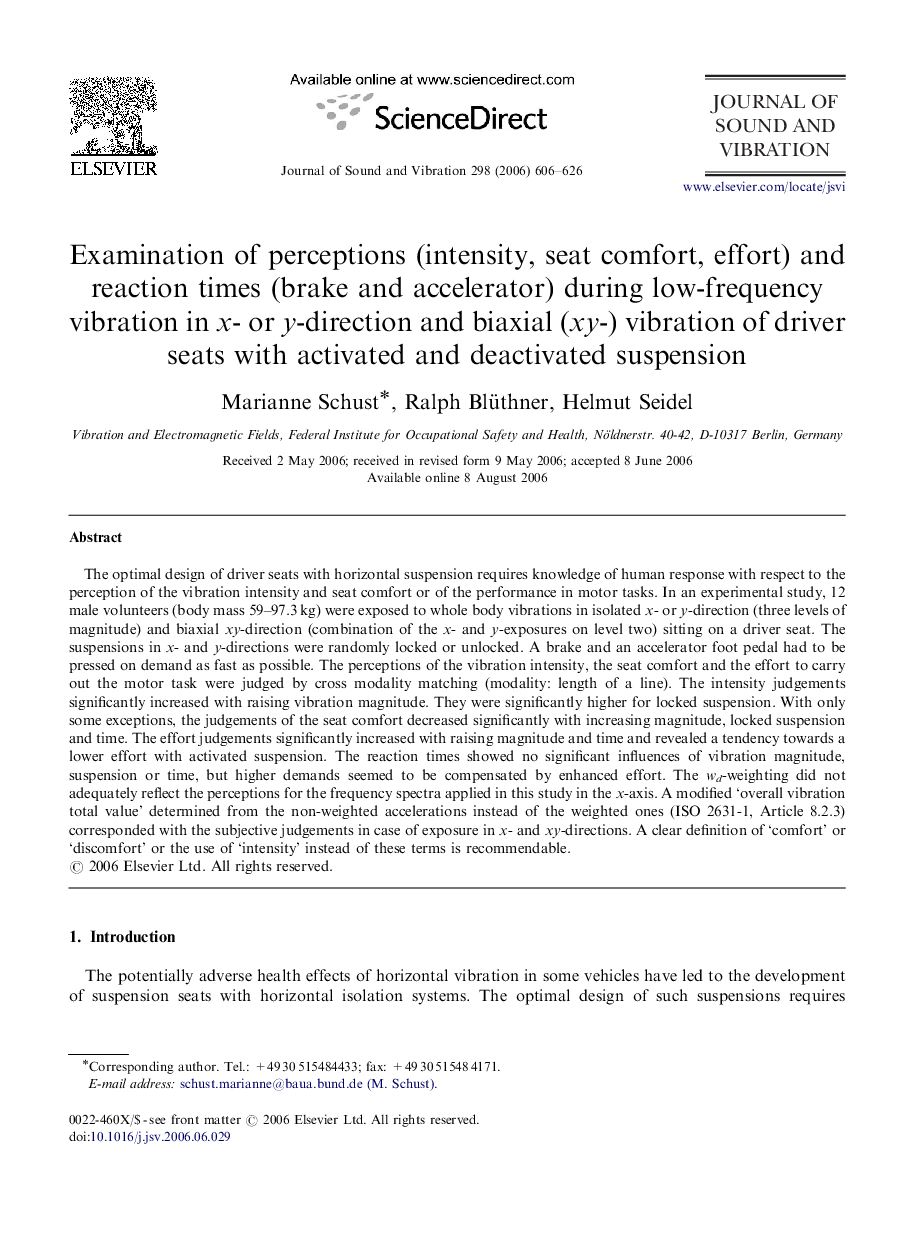| Article ID | Journal | Published Year | Pages | File Type |
|---|---|---|---|---|
| 291259 | Journal of Sound and Vibration | 2006 | 21 Pages |
The optimal design of driver seats with horizontal suspension requires knowledge of human response with respect to the perception of the vibration intensity and seat comfort or of the performance in motor tasks. In an experimental study, 12 male volunteers (body mass 59–97.3 kg) were exposed to whole body vibrations in isolated x- or y-direction (three levels of magnitude) and biaxial xy-direction (combination of the x- and y-exposures on level two) sitting on a driver seat. The suspensions in x- and y-directions were randomly locked or unlocked. A brake and an accelerator foot pedal had to be pressed on demand as fast as possible. The perceptions of the vibration intensity, the seat comfort and the effort to carry out the motor task were judged by cross modality matching (modality: length of a line). The intensity judgements significantly increased with raising vibration magnitude. They were significantly higher for locked suspension. With only some exceptions, the judgements of the seat comfort decreased significantly with increasing magnitude, locked suspension and time. The effort judgements significantly increased with raising magnitude and time and revealed a tendency towards a lower effort with activated suspension. The reaction times showed no significant influences of vibration magnitude, suspension or time, but higher demands seemed to be compensated by enhanced effort. The wd-weighting did not adequately reflect the perceptions for the frequency spectra applied in this study in the x-axis. A modified ‘overall vibration total value’ determined from the non-weighted accelerations instead of the weighted ones (ISO 2631-1, Article 8.2.3) corresponded with the subjective judgements in case of exposure in x- and xy-directions. A clear definition of ‘comfort’ or ‘discomfort’ or the use of ‘intensity’ instead of these terms is recommendable.
